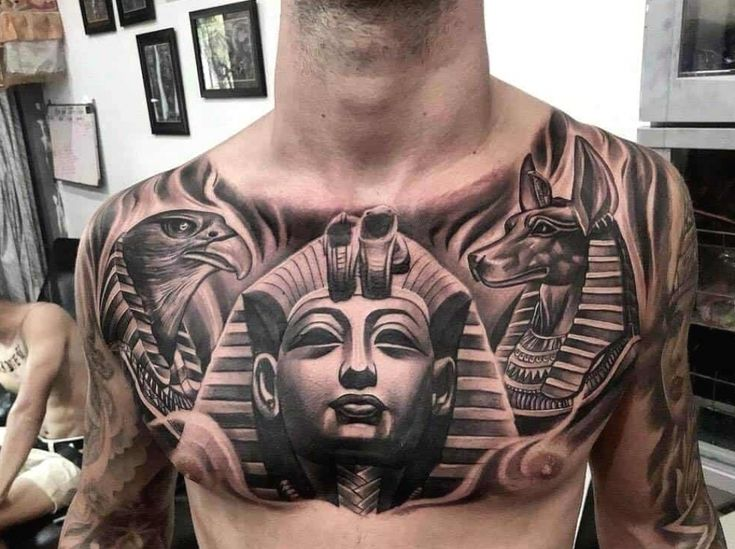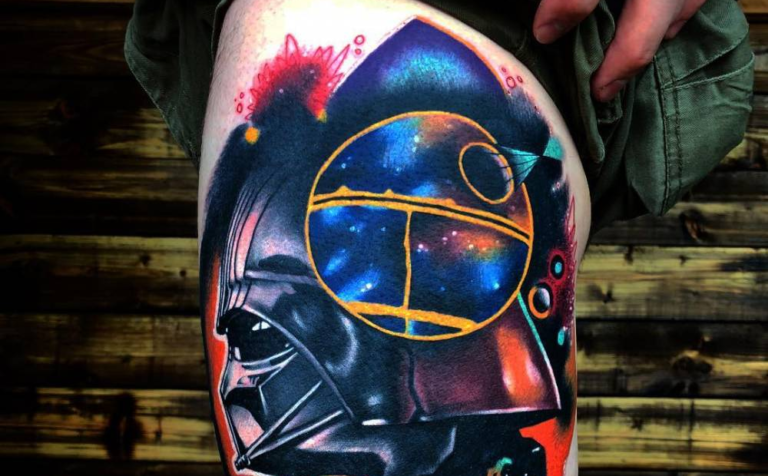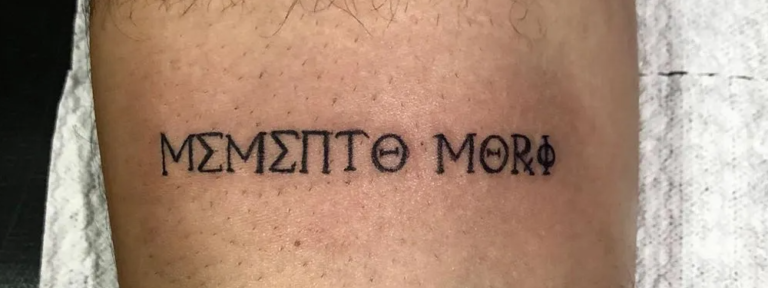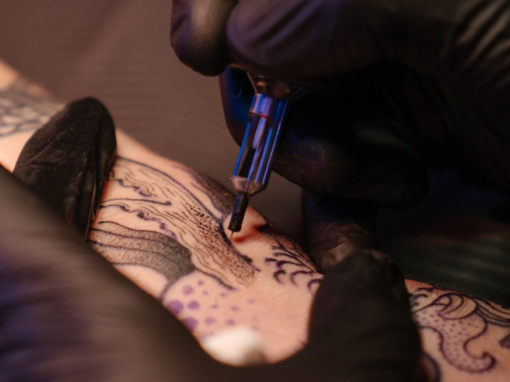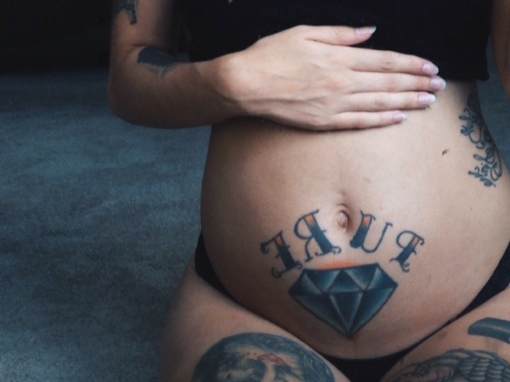The image of Vikings is now closely associated with signs of bravery, courage, and strength. Those mighty trailblazers have often traveled by sea from Scandinavia and left behind a great legacy across the expanse of Europe.
Their footprint extends to the present day, considering how much different content exists with them. But do they match up to how they’re perceived?
In this article, we will discuss the truth behind Viking tattoos, explore their historical context, and introduce a collection of Nordic Viking tattoos that draw inspiration from the rich tapestry of Norse mythology and culture.
What Did Real Viking Tattoos Look Like?

Unfortunately, the historical record doesn’t shed much light on Viking tattoos. We don’t have specific details about the designs, content, colors, and tools they used. The resources available to historians today are very doubtful to support the theory about warrior Viking symbols tattoos.
Most likely, the Vikings’ attire was rather practical and modest, not worthy of being recorded in chronicles. And they certainly did not tattoo half their heads with runes like uncultured barbarians.
How Could the Vikings Get Their Tattoos?
If the Vikings were to wear tattoos, they would most likely do so in the same way as all other ancient civilizations — by making their own ink from natural pigments. They might have made a base by mixing charcoal, soot, or crushed minerals with water or oil. They could have also used organic materials such as plant juices or animal fats.
The tattooing technique itself might have involved repeatedly puncturing the skin with the needle and then rubbing or tapping the ink into the puncture wounds. This method, known as hand-tapping or hand-poking, has been used by various cultures throughout history.
How Different Media Shows Vikings

The image of Viking warriors has been romanticized and popularized in various forms of media, with TV series and video games being the most known ones. These depictions often showcase fierce warriors adorned in intricate armor, wielding powerful weapons, and sailing on majestic longships.
The authors of these media outlets have also done a very thorough job of portraying Vikings and have contributed to shaping a vivid and compelling narrative of Viking life. However, they also gave rise to some stereotypes, such as the myth of helmets with horns (real Vikings did not wear them) or an outfit with an open torso (which is not practical in real combat).
Tattoo customization options in the game Assassin’s Creed Valhalla. Source: IGN

The point is that although the tattoos with warlike Viking symbols depicted in the media are not a true heritage of Scandinavian culture, nothing prevents you from drawing inspiration from your favorite series or video games.
After all, warrior Viking symbols tattoos are meant to represent your experience, not to be a living exhibit for a museum.
Norse Symbols and Their Meanings
Vikings practiced Norse paganism, worshiping a pantheon of deities such as Odin, Thor, Freyja, Loki, etc. They believed in a cosmology with various realms, including Asgard (home of the gods) and Midgard (world of humans).
Let’s take a look at the most famous symbols of Norse mythology and their meanings.
Helm of Awe
The Helm of Awe, also known as Aegishjalmur, is a powerful guardian charm symbol in Norse mythology that is often associated with Odin — the head of the Aesir gods.
It is believed that wearing or drawing this symbol will invoke the protection and power from Odin, giving strength and courage to those wearing it.
But do not accidentally confuse the Helm of Awe with Vegvisir, which is another symbol that represents guidance and safe travels. This is why this symbol also goes by the name “Viking compass”.
This section features our artist, Regina Perez.
To put it simply: if you spot a circular pattern with similar symbols that look like eight arms, that’s the Helm of Awe standing strong. If this pattern has many different sharper square-like symbols, you’ve found Vegvisir. They both go well together in the Viking shield tattoo design concept.
Yggdrasil
Yggdrasil is the legendary Immense Tree or the Imaginary Tree from Norse cosmology. The branches of this tree hold the nine worlds described in myths. Yggdrasil tattoos represent life, growth, and the cyclical nature of reality.
Valknut
Valknut is one of the most well-known symbols from Norse mythology, consisting of three triangles that interlock with each other. Those triangles represent the interconnection between life, death, and afterlife.
Another name that is associated with this symbol is the “knot of the slain” or the “warrior’s knot.” Some interpret it as a symbol representing everlastingness, particularly in the realm of Valhalla, where brave warriors go after death.
Even today you can hear the expression “till Valhalla“, meaning a way of honoring fallen warriors and expressing a sentiment of respect, bravery, and a desire for a heroic afterlife.
Odin’s Ravens
Odin’s Ravens are two mythical birds in Norse mythology named Huginn and Muninn. Their purpose is to fly across the world each day to gather information and news for Odin.
Huginn is associated with the power of thought, intelligence, and keen observation, while Muninn represents memory and the ability to retain information.
Viking tattoos were generally simple and often comprised basic geometric designs. The limited evidence available from archaeological findings suggests that the Vikings had a preference for uncomplicated patterns, typically consisting of lines and dots. However, for tattoo inspiration, you might take a look at Viking’s art.
Best Ideas Inspired by Warrior Viking Symbols Tattoos
Viking Rune Tattoos
You can make your own customized marking with the runic alphabet. Well, alphabets to be exact, there are several of them. The most commonly used, however, are Elder Futhark and Younger Futhark.
Elder Futhark is the oldest runic alphabet, and it has 24 characters. Many people choose it for its historical significance and the broader range of characters, providing more options for creative and personalized designs. The Younger Futhark is a simplified version with 16 characters, making it more streamlined and easier to use.
Runic tattoos can be used in various ways — for example, a name or a power word. Nevertheless, you should be careful because even runes can be problematic in some cases.
Norse Art Style Tattoos
Viking art styles encompass the visual expressions of the Norse people, primarily during the Viking Age, which spanned from the late 8th century to the early 11th century.
Norse art is characterized by its intricate and stylized designs, often found in various mediums such as metalwork, wood carving, and textiles.
You might want to take inspiration from one of these styles:
- Broa Style
- Oseberg Style
- Borre Style
- Jelling Style
- Mammen Style
- Ringerike Style
- Urnes Style
You can learn a lot about each tattoo style by reading up on them, like in the book ‘The Anatomy of Viking Art’ by Jonas Lau Markussen. Additionally, you can collaborate with your tattoo artist to design a unique tattoo that incorporates one or more styles.
Combining Symbols Together
On their own, these symbols are quite self-contained, but if you combine them in a coherent picture, you can get a whole new epic story, like the Ragnarök Viking tattoo.
This section features our artists, Anna Banana and Guilherme Assumpção.
Be Careful With These Norse Symbols!
Unfortunately, some Norse symbols have been misappropriated by hate groups, supremacists, cults, and extremists. This problem has been around for a long time, with some symbols used by soldiers in the Second World War, citing that Germanic and Scandinavian symbols are meant to show the purity of race and blood.
Alas, this idea is still alive today, so you should be very careful about using some of the symbols in your tattoos so that they don’t cause you any problems in the future. And if you do have problems because of these tattoos, it’s best to consider getting them covered up.
Now think twice before considering these symbols below, especially if they have no other context surrounding them:
- Wolfsangel — features a double-hook design, originally a symbol of protection.
- Tiwaz — also named “Týr”, a rune that looks like an arrow pointing upwards, originally representing justice and honor.
- Algiz — a rune resembling a “Y” with extended arms, used to signify spiritual connection and defense against harm.
- Othala — a rune with a diamond shape in the center, associated with inheritance and ancestral homeland.
- Valknut — a knot-like pattern with three interlocking triangles, symbolizing life, death, and rebirth.
- Raven flag — historically, a symbol used by Vikings at sea, representing Odin’s ravens.
- Thor’s Hammer — used to symbolize strength and preservation.
Below are images of these symbols used in tattoos (the order of the images corresponds to the list):
They can also encrypt their narratives behind runes, so be careful with them as well. To prevent undue frustration and accurately convey the intended significance of the symbols, merge them with other symbols from Nordic culture in a unified composition.
Summary
To this day, we might not have a single clue about the exact designs Vikings sported, but choosing a design isn’t about chasing some elusive truth, it’s about crafting your personal narrative.
The people of the North have always been great storytellers, and you can be too, with warrior Viking symbols tattoos of your own style. The field for imagination is as vast as the snowy fjords of Scandinavia. Be it an inspiration from your favorite fictional character or a cultural ornament. Just remember — appreciate, not appropriate.
Be mindful of some symbols’ misadventures in the hands of hate groups. Viking tattoo symbols deserve much better than that. Be sure to discuss your ideas with your tattoo artist before implementing your ideas.
FAQ
🔎 What Did Warrior Viking Tattoos Look Like?
It is not known for certain to this day whether the Vikings wore tattoos at all. However, simple patterns or Norse symbols are believed to have been used in Viking tattoos.
💢 Are Norse Symbols Associated With Hate Groups?
Unfortunately, yes. Some Norse symbols have been misused by hate groups. Think very carefully about the design of your tattoo with symbols such as Othala, Valknut, and others to avoid unnecessary problems. It’s crucial to understand their original meanings to avoid misconceptions.
💡 Where Can I Find a Warrior Viking Tattoo Idea?
Look for inspiration for Norse mythology tattoos in books, historical artifacts, or in the online communities that are dedicated to Viking art. Local tattoo artists often have creative insights to offer as well!
❓ What Is the Meaning of Warrior Viking Tattoos?
Viking tattoo meanings were rather diverse. They could symbolize power, valor, preservation, or devotion to Norse gods. Choose symbols aligned with your personal values for a meaningful tattoo.




























































